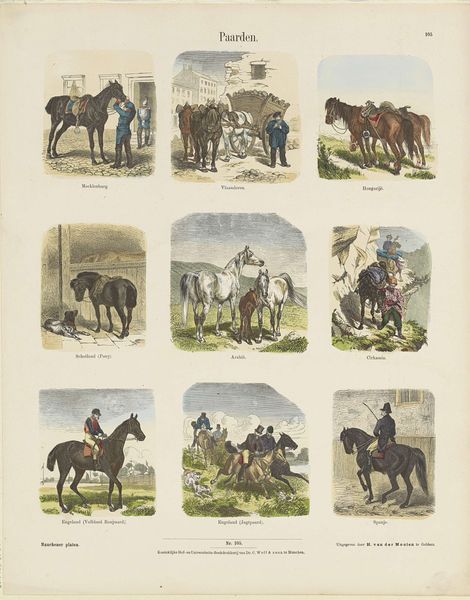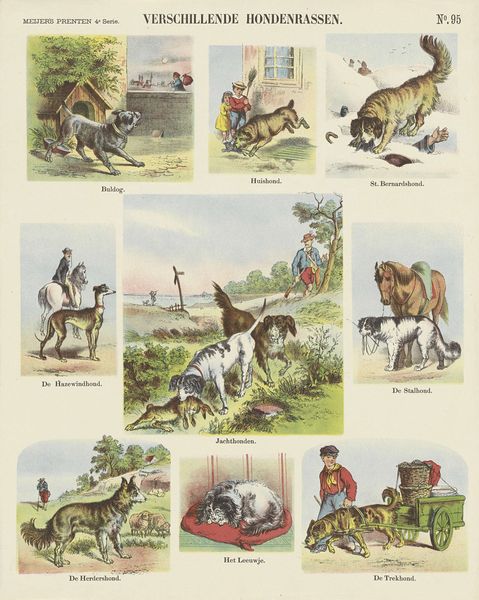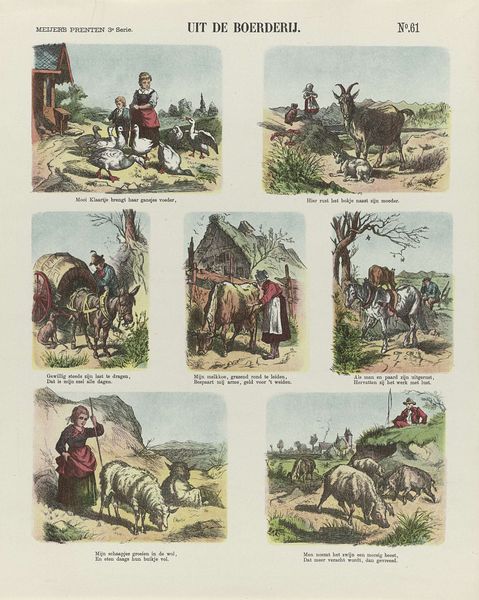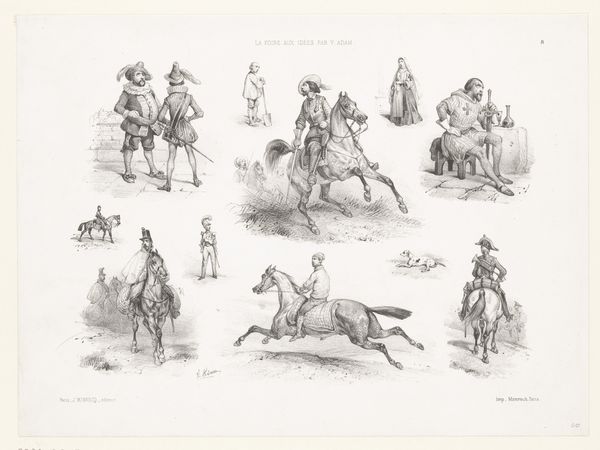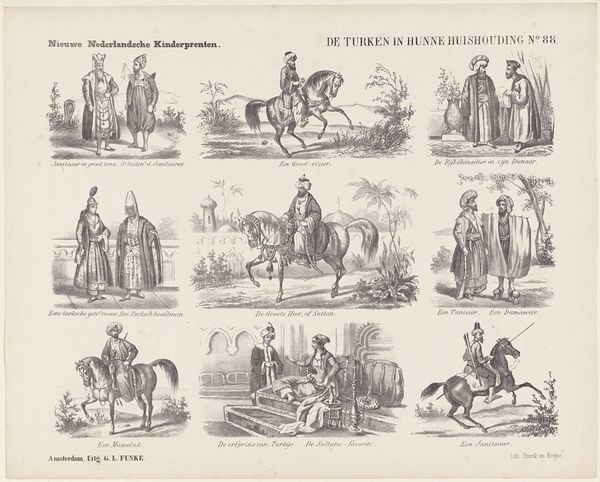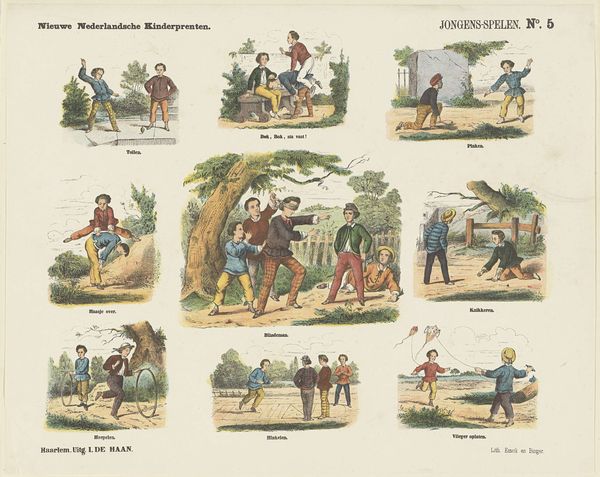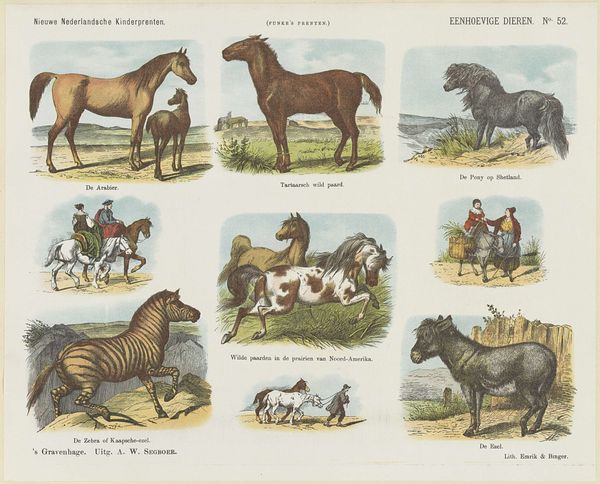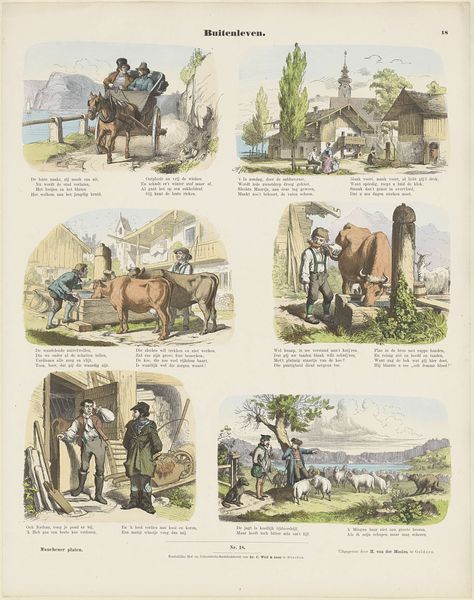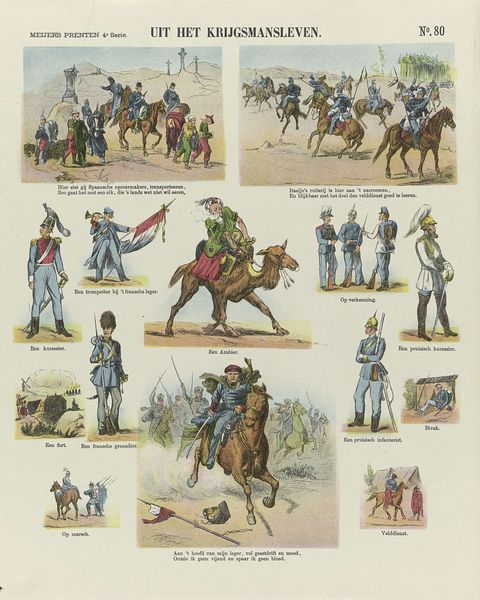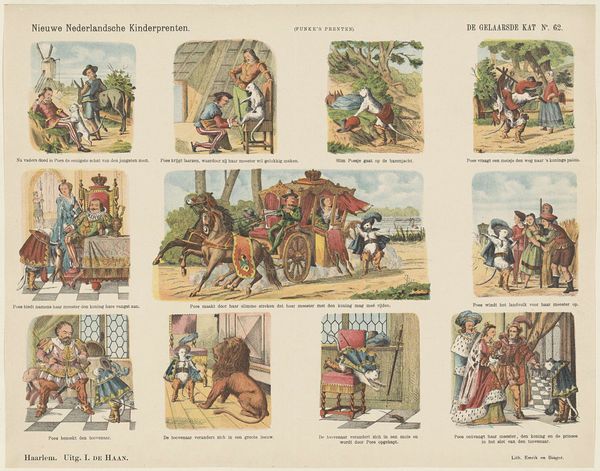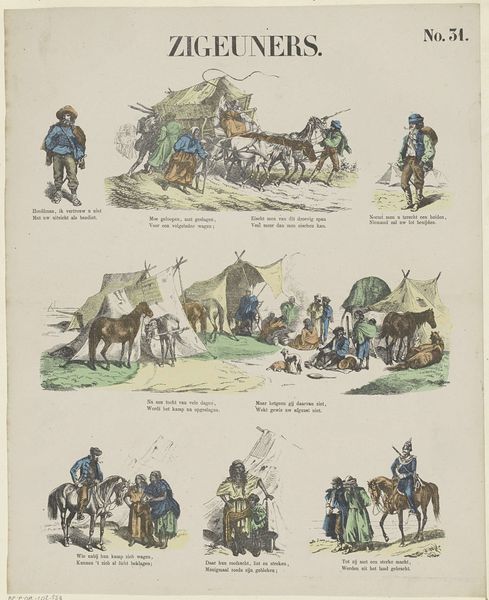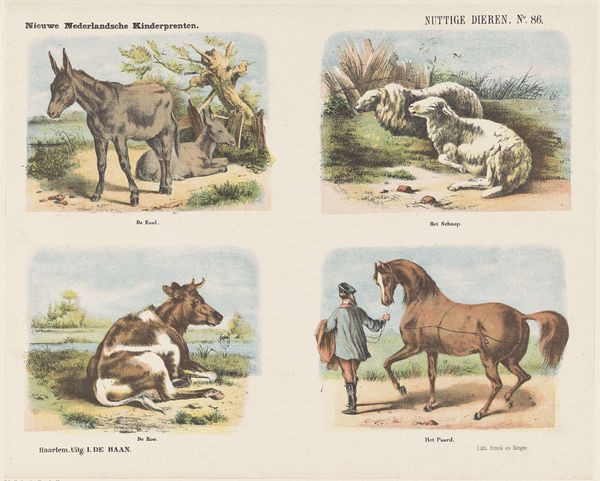
#
imaginative character sketch
#
quirky sketch
#
animal
#
dutch-golden-age
# print
#
dog
#
sketch book
#
landscape
#
personal sketchbook
#
sketchwork
#
journal
#
horse
#
sketchbook drawing
#
watercolour illustration
#
genre-painting
#
storyboard and sketchbook work
#
sketchbook art
Dimensions: height 337 mm, width 425 mm
Copyright: Rijks Museum: Open Domain
Curator: Here we have Jan de Haan’s "Voor het plakboek / (10)", dating from between 1875 and 1903, presented as a print. It looks like something pulled straight from a children’s book of the period. What strikes you immediately? Editor: Whimsy! A whole array of rustic scenes: animals, figures interacting in rural landscapes. It reminds me of a sampler, where you practice a bit of everything. There's a kind of unpretentious charm in its simplicity. Curator: Precisely. Consider the context: a "plakboek" translates to scrapbook. This wasn't meant as high art, but as material for personal collection, assembly, and use, a direct challenge to traditional art hierarchies by emphasizing everyday experience. Think of the families engaging with this image; cutting, pasting, rearranging. It shifts the point of art away from the art object to the process of making. Editor: I like that. It reframes our understanding, doesn’t it? Not just about consumption, but active participation. Looking closer, one cannot help but notice a distinct socio-economic reality portrayed, right? Rural labor, traditional gender roles - the woman struggles with the pig while the man is presented actively "working". This seemingly innocent picture book page then provides insights into a past culture’s modes of working. Curator: Absolutely, by investigating how the illustrations are produced, sold, and used, we start to recognize that even such apparently simple prints reveal underlying conditions related to labour, gender roles, class relations and economics of Dutch society. Editor: It highlights the social dynamics present, making it a lens through which we can understand more than the imagery. Curator: It underscores the idea that art doesn't exist in a vacuum; its creation, consumption, and meaning are always deeply enmeshed within specific material and social contexts. I appreciate de Haan’s embrace of accessibility within the art world and the challenge this piece places on hierarchies of culture production. Editor: Well said! Now, looking at it, I can see even more dimensions I hadn’t previously. It shows the capacity of a "scrapbook" element to reveal narratives related to the social structure and values present at the moment of production, which makes one consider not only the picture’s message but who and what it served to empower and disempower.
Comments
No comments
Be the first to comment and join the conversation on the ultimate creative platform.
